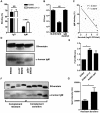Modified lipooligosaccharide structure protects nontypeable Haemophilus influenzae from IgM-mediated complement killing in experimental otitis media
- PMID: 22761391
- PMCID: PMC3398534
- DOI: 10.1128/mBio.00079-12
Modified lipooligosaccharide structure protects nontypeable Haemophilus influenzae from IgM-mediated complement killing in experimental otitis media
Abstract
Nontypeable Haemophilus influenzae (NTHi) is a Gram-negative, human-restricted pathogen. Although this bacterium typically colonizes the nasopharynx in the absence of clinical symptoms, it is also one of the major pathogens causing otitis media (OM) in children. Complement represents an important aspect of the host defense against NTHi. In general, NTHi is efficiently killed by complement-mediated killing; however, various resistance mechanisms have also evolved. We measured the complement resistance of NTHi isolates isolated from the nasopharynx and the middle ear fluids of OM patients. Furthermore, we determined the molecular mechanism of NTHi complement resistance. Complement resistance was strongly increased in isolates from the middle ear, which correlated with decreased binding of IgM. We identified a crucial role for the R2866_0112 gene in complement resistance. Deletion of this gene altered the lipooligosaccharide (LOS) composition of the bacterium, which increased IgM binding and complement-mediated lysis. In a novel mouse model of coinfection with influenza virus, we demonstrate decreased virulence for the R2866_0112 deletion mutant. These findings identify a mechanism by which NTHi modifies its LOS structure to prevent recognition by IgM and activation of complement. Importantly, this mechanism plays a crucial role in the ability of NTHi to cause OM.
Importance: Nontypeable Haemophilus influenzae (NTHi) colonizes the nasopharynx of especially young children without any obvious symptoms. However, NTHi is also a major pathogen in otitis media (OM), one of the most common childhood infections. Although this pathogen is often associated with OM, the mechanism by which this bacterium is able to cause OM is largely unknown. Our study addresses a key biological question that is highly relevant for child health: what is the molecular mechanism that enables NTHi to cause OM? We show that isolates collected from the middle ear fluid exhibit increased complement resistance and that the lipooligosaccharide (LOS) structure determines IgM binding and complement activation. Modification of the LOS structure decreased NTHi virulence in a novel NTHi-influenza A virus coinfection OM mouse model. Our findings may also have important implications for other Gram-negative pathogens harboring LOS, such as Neisseria meningitidis, Moraxella catarrhalis, and Bordetella pertussis.
Figures





Similar articles
-
Serum IgM and C-Reactive Protein Binding to Phosphorylcholine of Nontypeable Haemophilus influenzae Increases Complement-Mediated Killing.Infect Immun. 2019 Jul 23;87(8):e00299-19. doi: 10.1128/IAI.00299-19. Print 2019 Aug. Infect Immun. 2019. PMID: 31109949 Free PMC article.
-
Resistance to complement-mediated killing and IgM binding to non-typeable Haemophilus influenzae is not altered when ascending from the nasopharynx to the middle ears in children with otitis media.Med Microbiol Immunol. 2013 Dec;202(6):407-15. doi: 10.1007/s00430-013-0302-5. Epub 2013 Jun 18. Med Microbiol Immunol. 2013. PMID: 23775521
-
Sialic Acid Protects Nontypeable Haemophilus influenzae from Natural IgM and Promotes Survival in Murine Respiratory Tract.Infect Immun. 2021 May 17;89(6):e00676-20. doi: 10.1128/IAI.00676-20. Print 2021 May 17. Infect Immun. 2021. PMID: 33782153 Free PMC article.
-
[Immunity to antigens of nontypeable Haemophilus influenzae strains].Zh Mikrobiol Epidemiol Immunobiol. 2007 Sep-Oct;(5):115-21. Zh Mikrobiol Epidemiol Immunobiol. 2007. PMID: 18038557 Review. Russian.
-
Role of nontypeable Haemophilus influenzae in otitis media and chronic obstructive pulmonary disease.Adv Otorhinolaryngol. 2011;72:170-5. doi: 10.1159/000324785. Epub 2011 Aug 18. Adv Otorhinolaryngol. 2011. PMID: 21865721 Review.
Cited by
-
Antibody Binding and Complement-Mediated Killing of Invasive Haemophilus influenzae Isolates from Spain, Portugal, and the Netherlands.Infect Immun. 2020 Sep 18;88(10):e00454-20. doi: 10.1128/IAI.00454-20. Print 2020 Sep 18. Infect Immun. 2020. PMID: 32719154 Free PMC article.
-
Nontypeable Haemophilus influenzae Invasive Blood Isolates Are Mainly Phosphorylcholine Negative and Show Decreased Complement-Mediated Killing That Is Associated with Lower Binding of IgM and CRP in Comparison to Colonizing Isolates from the Oropharynx.Infect Immun. 2019 Jan 24;87(2):e00604-18. doi: 10.1128/IAI.00604-18. Print 2019 Feb. Infect Immun. 2019. PMID: 30455196 Free PMC article.
-
Serum IgM and C-Reactive Protein Binding to Phosphorylcholine of Nontypeable Haemophilus influenzae Increases Complement-Mediated Killing.Infect Immun. 2019 Jul 23;87(8):e00299-19. doi: 10.1128/IAI.00299-19. Print 2019 Aug. Infect Immun. 2019. PMID: 31109949 Free PMC article.
-
Insights on persistent airway infection by non-typeable Haemophilus influenzae in chronic obstructive pulmonary disease.Pathog Dis. 2017 Jun 1;75(4):ftx042. doi: 10.1093/femspd/ftx042. Pathog Dis. 2017. PMID: 28449098 Free PMC article. Review.
-
Shielding of a lipooligosaccharide IgM epitope allows evasion of neutrophil-mediated killing of an invasive strain of nontypeable Haemophilus influenzae.mBio. 2014 Jul 22;5(4):e01478-14. doi: 10.1128/mBio.01478-14. mBio. 2014. PMID: 25053788 Free PMC article.
References
-
- Cripps AW, Otczyk DC, Kyd JM. 2005. Bacterial otitis media: a vaccine preventable disease? Vaccine 23:2304–2310 - PubMed
-
- Broides A, Dagan R, Greenberg D, Givon-Lavi N, Leibovitz E. 2009. Acute otitis media caused by Moraxella catarrhalis: epidemiologic and clinical characteristics. Clin. Infect. Dis. 49:1641–1647 - PubMed
-
- Hallström T, Riesbeck K. 2010. Haemophilus influenzae and the complement system. Trends Microbiol. 18:258–265 - PubMed
-
- Schweda EK, Richards JC, Hood DW, Moxon ER. 2007. Expression and structural diversity of the lipopolysaccharide of Haemophilus influenzae: implication in virulence. Int. J. Med. Microbiol. 297:297–306 - PubMed
Publication types
MeSH terms
Substances
LinkOut - more resources
Full Text Sources
Other Literature Sources
Medical
Molecular Biology Databases
